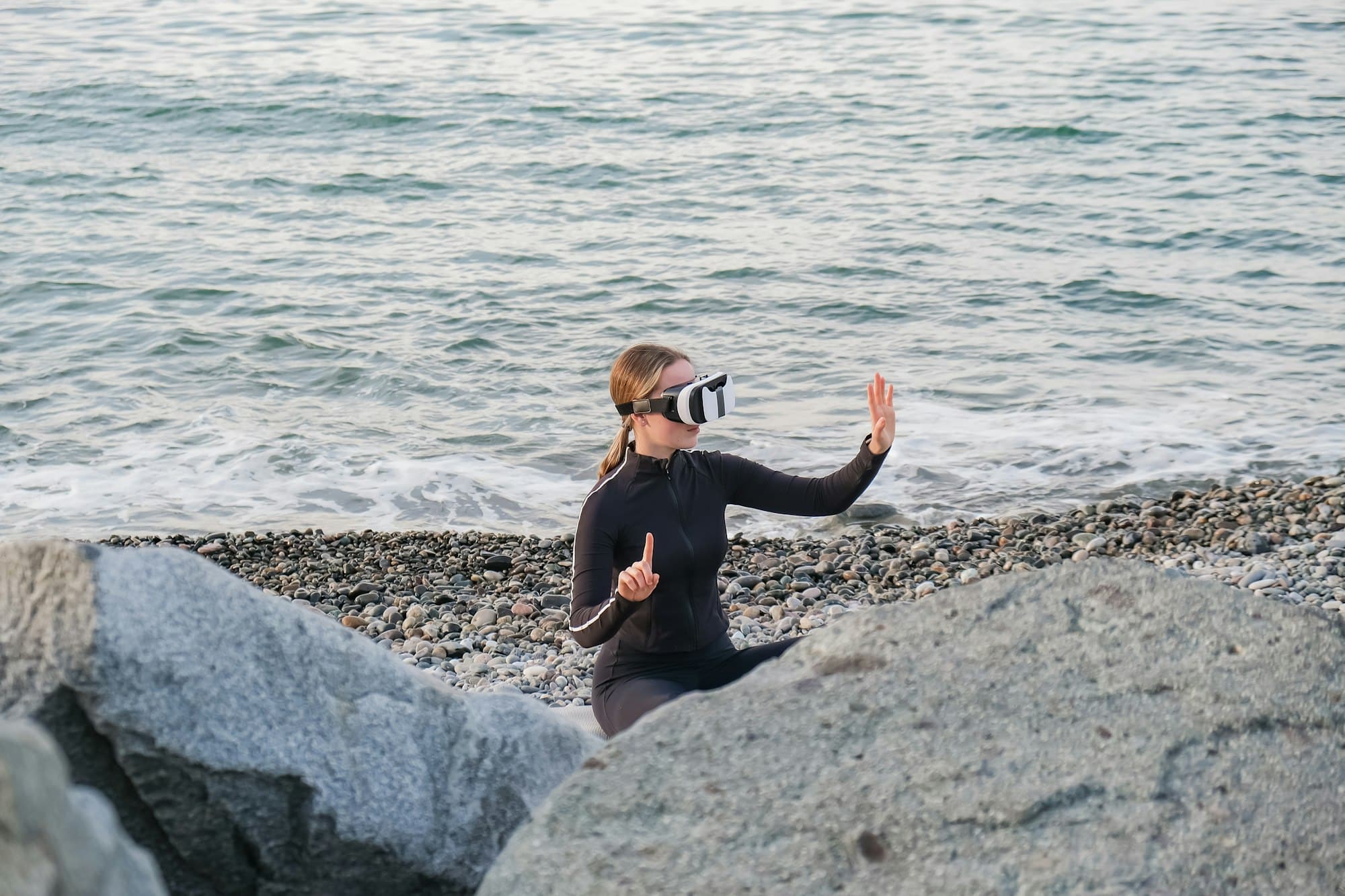Unleashing the potent power of technology to serve the cause of cultural preservation and education is certainly a game changer. The potential of virtual reality (VR) as a tool for bringing to life the rich tapestry of our history and culture is immense. This article will delve into the specifics of how virtual reality can be employed in heritage preservation, be it for historical sites, museums, or even digital content. So, are you ready to embark on a journey to discover how VR can transform your cultural experience?
The Intersection of Virtual Reality and Cultural Heritage
Exploring the confluence of technology and culture, we find that virtual reality brings a new dimension to cultural heritage. From enabling users to take virtual tours of historical sites to creating immersive experiences in museums, VR has the potential to revolutionize how we access and engage with our cultural heritage.
Topic to read : What Advances Are Needed for Sustainable Urban Mobility Solutions?
VR applications for cultural heritage are not limited to mere recreation of historical sites. They can also be used for preservation of these sites. With VR, you can create a digital replica of a historical site which will remain unchanged by the passage of time, unaffected by elements of weather or human intervention.
Additionally, VR also allows for broader accessibility. A person sitting in one part of the world can virtually explore a museum or a historical site located in another part of the world. It breaks down geographical barriers and makes cultural heritage universally accessible.
In parallel : Can Blockchain Enhance the Security and Efficiency of Online Voting Systems?
Virtual Reality in Museums: A New Age of Discovery
Museums have always been keepers of our cultural and historical heritage. But with the advent of modern day technology, they are also becoming grounds for innovation in the field of education and preservation.
Virtual reality can transform the way we experience museums. Imagine being able to walk through the corridors of the Louvre Museum in your living room, or interact with the exhibits at the Smithsonian without actually being there. This is what VR can do. It can recreate the museum experience in an absolutely immersive and interactive manner.
Moreover, virtual reality can also be a great tool for museums to digitally preserve their collections. It can create 3D models of exhibits, allowing for a detailed study without risking any damage. This can also help in the preservation of delicate artifacts that are prone to decay over time.
Digital Data Preservation: An Archival Revolution
With the help of virtual reality, digital preservation has entered a new era. VR can be used to create digital replicas of historical documents, paintings, sculptures, and even entire buildings or cities. This kind of preservation is incredibly important as it protects our cultural heritage from loss due to factors like war, natural disasters, or degradation over time.
The digital data can be stored in a much more compact and efficient manner than its physical counterpart. But more importantly, it can be made accessible to users across the globe. Whether you’re a student researching a project, an academic studying a particular era, or just a casual history enthusiast, access to this digital library can be invaluable.
The User Experience: Immersive, Interactive, Informative
Virtual reality has changed the game in terms of user experience. It has moved beyond traditional methods of engagement and offers a truly immersive experience. Users are not just passive observers but active participants in the VR environment.
In the context of cultural heritage, this means that users can walk through historical sites as if they were actually present there, interact with exhibits in a museum, and even engage with historical characters. The potential for education here is enormous. It can bring history and culture alive for users in a way that textbooks or documentaries simply cannot.
Equally important, the interactive nature of VR can also make learning more engaging and enjoyable. This could be particularly beneficial in an educational setting where keeping students interested and engaged can often be a challenge.
From Concept to Reality: VR Projects in Cultural Heritage Preservation
There are already a number of groundbreaking projects that are using virtual reality to preserve our cultural heritage. For instance, the VR project at the ancient city of Petra allows users to explore the city as it would have looked at its peak. Similarly, the British Museum has embarked on a project to digitally preserve its exhibits and make them accessible in a virtual environment.
While these are just a few examples, they signify the vast potential of virtual reality in cultural heritage preservation and education. With ongoing advancements in VR technology, the possibilities are virtually endless. As such, we can look forward to many more innovative applications of VR in the realm of cultural heritage in the coming years.
Augmented Reality: Enhancing Virtual Preservation
Adding to the technological marvel of VR, augmented reality (AR) is another tool that can greatly enhance cultural preservation. AR adds digital elements to a live view, often by using the camera on a smartphone. This opens up a new realm of possibilities for bringing cultural and historical sites to life.
Imagine visiting a historical site and being able to use your smartphone to overlay information about what you’re seeing, or even to recreate what the site looked like in its prime. This application of AR can make visits to heritage sites even more informative and engaging.
Furthermore, AR could also be used in virtual heritage preservation. It can supplement VR by adding extra layers of information and interactivity. This could include details about the construction methods used, the people who lived there, or the historical events that took place at the site.
Combining VR and AR could lead to the creation of a fully immersive and interactive experience that would enable users to explore our cultural legacy like never before. This could be particularly useful in an educational context, helping to bring history to life for future generations.
High-Resolution Scanning and Artificial Intelligence: The Future of Virtual Preservation
The future of virtual heritage preservation lies not only in the hands of VR and AR but also in high-resolution scanning and artificial intelligence. High-resolution scanning allows for the creation of highly detailed 3D models of artifacts and sites. These models can then be used in VR environments, providing an incredibly detailed and realistic representation of the artifact or site.
Meanwhile, artificial intelligence (AI) and computer vision technologies can automate the process of digital preservation. These technologies can scan, categorize, and analyze artifacts and sites much more quickly and accurately than a human could. This could greatly speed up the process of digital preservation, potentially saving countless artifacts from being lost to time.
The combination of these technologies could lead to a new era of virtual heritage preservation and education. By making these digital resources available through open access initiatives, we can ensure that our cultural legacy is preserved for future generations.
Conclusion: Securing Our Cultural Legacy Through Virtual Reality
The preservation of cultural heritage is a global responsibility and virtual reality, in combination with augmented reality, high-resolution scanning, and artificial intelligence, is proving to be a powerful tool in this endeavor. These technologies can create a digital record of our cultural heritage, preserving it against time, natural disasters, and other risks.
Moreover, these digital resources offer an interactive and immersive experience that can greatly enhance the way we engage with our cultural heritage. These technologies can bring history to life in a way that textbooks or traditional museum visits simply cannot. They can transport us to different eras, allowing us to walk through historical sites and interact with ancient artifacts.
As we look to the future, it’s clear that the combination of VR, AR, high-resolution scanning, and AI will enable us to take a big leap forward in the field of cultural heritage preservation. It promises a future where anyone, anywhere in the world, can access and engage with our global cultural heritage, helping to ensure its preservation for future generations.
In conclusion, virtual reality is not just a tool for entertainment or gaming. It is a potent tool that can safeguard our past, enrich our present, and inspire our future. The potential of VR in preserving and educating about cultural heritage is immense and it has just begun to unfold. As our grasp on this technology improves, the possibilities are virtually limitless. It is indeed an exciting time for those interested in cultural heritage and a promising era for preserving our precious cultural legacy.













